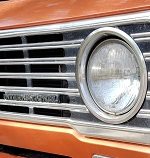|
Bardeh posted:Dunno if this is the right thread for this question - if not, could someone point me to where would be best to post it? I would go for the Honda, guessing the diesel has a lot more torque which I think make a big difference if you're driving a car with less than 130hp. I didn't even know they made a diesel civic, don't think we got that in North America. I would assume the civic is easier and cheaper to maintain but that's based off the petrol ones.
|
|
|
|

|
| # ? May 24, 2024 07:10 |
|
Went for the Civic in the end. Got a 90 mile round trip commute starting in the morning, so will give it a proper run then and see what sort of mpg it'll actually do.
|
|
|
|
Diesel doesn't seem to have much of a future overall (for cars) but I suppose that's still a while off.
|
|
|
|
VelociBacon posted:I would go for the Honda, guessing the diesel has a lot more torque which I think make a big difference if you're driving a car with less than 130hp. Cars in Europe are smaller and so are their HP numbers. Theres plenty of 3- and 4 bangers around that are around 100 HP and they're fine for city and highway driving.
|
|
|
|
spankmeister posted:Cars in Europe are smaller and so are their HP numbers. Theres plenty of 3- and 4 bangers around that are around 100 HP and they're fine for city and highway driving. Yeah I get that, just figured two cars with ~120hp, the diesel one probably has 30% more torque which helps.
|
|
|
|
VelociBacon posted:Yeah I get that, just figured two cars with ~120hp, the diesel one probably has 30% more torque which helps. Differences in gearing could offset that 30% torque bump.
|
|
|
|
Hello thread, I am seeking advice about tires. I am looking to buy a new set of tires for my 1998 Isuzu Amigo. I'd like to get my tires at Costco. My two main options for a 245/70R16 tire are the Bridgestone Dueler Alenza for $173, and the Michelin Defender for $215. Any thoughts on these two? The Bridgestone has an 80K mile warranty, versus the Michelin's 70k. Thank you. literally this big fucked around with this message at 08:37 on Mar 24, 2022 |
|
|
|
|
VelociBacon posted:Yeah I get that, just figured two cars with ~120hp, the diesel one probably has 30% more torque which helps. that ford zetec triple is turbocharged so it has a very nice torque curve. 150 lb-ft on overboost, peak torque from 1500-4500 rpm. still for a 90 mile commute I'd probably take the Civic with UK diesel/petrol price splits.
|
|
|
|
literally this big posted:Hello thread, I am seeking advice about tires. I am looking to buy a new set of tires for my 1998 Isuzu Amigo. I'd like to get my tires at Costco. My two main options for a 245/70R16 tire are the Bridgestone Dueler Alenza for $173, and the Michelin Defender for $215. Any thoughts on these two? The Bridgestone has an 80K mile warranty, versus the Michelin's 70k. Neither is a bad tire. And it's up to you how much money you want to spend. But I will always choose the Michelin (or BFG, or Yokohama, which are both made by Michelin) over any other brand for purposes of performance and durability.
|
|
|
|
My daughter has a wooden swingset/slide thing in the back yard. I have been keeping winter wheels and tires under the slide part, but the bottom one gets all muddy and gross. What is the easiest and cheapest option for putting something under the tires that will keep them dry? Priorities: 1. cheap 2. lightweight because I don't want to haul a million pavers or bags of sand into the back yard 3. does a good job keeping dirt and mud off of some tires My first thought is some of those EVA foam mats. Any other ideas?
|
|
|
|
A wooden pallet from behind the dollar store?
|
|
|
|
Black contractor bags? I used two concrete bricks when I had a garage that would flood.
|
|
|
|
Hadlock posted:A wooden pallet from behind the dollar store? God drat that is a good idea. Thanks.
|
|
|
|
PBCrunch posted:God drat that is a good idea. Thanks. make sure there arenít any exposed nails or jagged edges that a kid could get hurt on by being stupid/a kid
|
|
|
|
I have a 2008 Equinox with a crippling overheating issue. The temperature creeps up at idle (though rarely, if ever, actually redlines), and generally drops once the car starts moving. A mechanic friend and I tried bleeding air out of the coolant system, replacing the thermostat, replacing the radiator cap, and replacing the bleeder screw. None of those solved the problem, though they did occasionally help for a bit. Heat in the car generally doesn't work, which preceded the overheating problems, but definitely seems to be related as we've gotten it to work for short periods of time while troubleshooting. After all of that, I gave up on the DIY approach and took it to a mechanic who flushed the coolant and replaced the radiator cap again, which had the car working like a dream for about 500 miles. Oil isn't milky. No steam in exhaust. No visible bubbling in the coolant reservoir. No sweet smell while the engine is running. No noticeable leaks on the floor either while the car is off or during long (10-30 minutes) sessions with the engine running. The radiator fan seems to work, and it runs for several minutes after the engine is shut off. Any thoughts as to what this might be? Another mechanic did take a look at it after the problems reoccurred, but I only ever got the cliffnotes version of what he said, which was that the problem would be expensive to fix and he didn't think it was worth it. Baronash fucked around with this message at 21:17 on Mar 24, 2022 |
|
|
|
Baronash posted:I have a 2008 Equinox with a crippling overheating issue. The temperature creeps up at idle (though rarely, if ever, actually redlines), and generally drops once the car starts moving. A mechanic friend and I tried bleeding air out of the coolant system, replacing the thermostat, replacing the radiator cap, and replacing the bleeder screw. None of those solved the problem, though they did occasionally help for a bit. Heat in the car generally doesn't work, which preceded the overheating problems, but definitely seems to be related as we've gotten it to work for short periods of time while troubleshooting. After all of that, I gave up on the DIY approach and took it to a mechanic who flushed the coolant and replaced the radiator cap again, which had the car working like a dream for about 500 miles. Sounds like your fan motor is dead. Park it and check to see if the fan comes on while itís idling. Oops just saw what you wrote. There could be two fans as well, Iím not familiar with the car.
|
|
|
|
Wonderllama posted:Sounds like your fan motor is dead. Park it and check to see if the fan comes on while itís idling. Sorry, ninja'd a blurb about the fan in an edit. The fan is coming on while it's idling, and it stays on for an abnormally long time after the engine is shut off. The temperature is also creeping up after slowing down from highway speeds, or just generally driving at lower speeds for a while. Baronash fucked around with this message at 21:44 on Mar 24, 2022 |
|
|
|
Based on the fan working and lots more air (like driving) makes it cool acceptably for now I'm gonna guess your radiator is junk. Not leaking, but largely plugged. Has anyone looked at it with a flir/thermal imaging camera? I'm gonna bet it's only transmitting heat in certain spots, probably just the top.
|
|
|
|
Baronash posted:I have a 2008 Equinox with a crippling overheating issue. The temperature creeps up at idle (though rarely, if ever, actually redlines), and generally drops once the car starts moving. Water pump impeller blades have dissolved. Replace the pump. I would have said fans too, except that you are getting no cabin heat, which tells me that water is not circulating.
|
|
|
|
PainterofCrap posted:except that you are getting no cabin heat Missed that part. Good catch. I agree on the pump. Your mechanic should have a flow tester to confirm this if there's any doubt.
|
|
|
|
2013 Ford Explorer Sport, V6 3.5l TDI gasoline (Ecoboost), just shy of 100,000 miles on it, suburban Detroit and we use salt on the roads in the winter. Since the lockdown, the Explorer has been largely unused (~5,000 miles in 2 years) and has been sitting with a battery tender on it most of the time and when it is driven when cargo or passenger requirements demand it. (I have 2015 cmax hybrid for daily driving) It's due for brakes (Had an oil change (and rear tow-link recall replacement again), saw very little pad remaining and didn't even try to sell brake service oddly enough). Last time I had brakes done I was told that they probably couldn't be turned anymore (40k miles ago?), so for the sake of peace of mind I'm just replacing the disks and pads. It's been a few years since I've done brakes myself and have never worked on brakes with an ABS system. I'm looking at Rotor and Brake pad kits on Rock Auto A few questions: I see "Coated (Additional Protection For Rust Prone Areas)" Are these worth it? Seems to me that the coating would just scratch off with use I see standard and heavy duty brakes listed. How do I tell if I have standard or heavy duty brakes? I see that they switched to heavy duty brakes on all Explorers in mid-2013 and positions 12-14 of my vin are C85 (is it a security risk to post a whole VIN?) Any other parts I should replace while I am doing this? Bolts, caliper slide pin and bushing seem obvious due to salt and rust. Does the parking brake need to be serviced at all?
|
|
|
|
My new-to-me Subaru Outback came with new Ironman iMove Gen2 AS tires. I suspect they're tire-shaped-objects that CarMax puts on cars because they wouldn't sell without tires. I plan to eventually replace them with something a little more AT-oriented, but I'm in no rush. Any idea if they're any good?
|
|
|
|
Dumb welding question: Iím doing some practicing with my flux core welder (min / max setting one with variable wire speed) and am trying to weld 0.8mm sheet metal. I canít figure out a pattern when it comes to blowing through the metal though. Sometimes I can stay in the same place for what feels like ages, and the next time it just instantly blows through as soon as the wire hits the metal. This has been on the ĒminĒ setting. I decided to try the ĒmaxĒ setting just to see how it is, and for some reason it feels more consistent when it comes to blowing through, and it also felt like I didnít blow through nearly as much.  I know I should get a proper welder with gas shiedling, but they are drat expensive so I would like to give this a go before I get one. At least this welder has paid for itself from the repair I used it for originally.
|
|
|
|
MrOnBicycle posted:Dumb welding question: I’m doing some practicing with my flux core welder (min / max setting one with variable wire speed) and am trying to weld 0.8mm sheet metal. I can’t figure out a pattern when it comes to blowing through the metal though. Sometimes I can stay in the same place for what feels like ages, and the next time it just instantly blows through as soon as the wire hits the metal. This has been on the ”min” setting. I decided to try the ”max” setting just to see how it is, and for some reason it feels more consistent when it comes to blowing through, and it also felt like I didn’t blow through nearly as much. Sheet metal has some challenges you don't come across in structural members related to heat. A big honker of metal can take a lot of heat and dissapate it without much noticeable change in your welding. Sheet metal heats up quick. If it's hot, you'll blow through it. You can also warp it easily by heating it unevenly. Corners heat up a lot faster, since there's less mass to spread out the heat. I work with gauge sizes, 0.8mm looks like 14 gauge which is reasonably thick, but I wouldn't expect to put long beads on it. Maybe 2-3cm at best before it gets too hot. Really thin stuff you have to put tiny spot welds and go around in big circles, adding heat gently and taking a lot of caution at corners.
|
|
|
|
I've welded 16GA & 18GA with flux core. It's messy, there's great potential for burn-through, and spatter in abundance. It can be done but it is very difficult and you'll be grinding a lot. I was never able to run a bead. Just 9,000 spotwelds. Just adding a bottle of CO2 as a shielding gas improved the quality of my welds immensely, and using 75/25 argon/CO2 should improve them even further with better control. Shielding gas or no, I am seconding StormDrain: sheet metal heats fast and warps. Many, many spot welds, and only short beads of a cm or two at the longest. If you have access to the back side of your work, try clamping a thicker piece of metal - preferably copper - along your weld line to act as a heat sink. It'll offer better control. PainterofCrap fucked around with this message at 03:17 on Mar 27, 2022 |
|
|
|
Fire Storm posted:2013 Ford Explorer Sport, V6 3.5l TDI gasoline (Ecoboost), just shy of 100,000 miles on it, suburban Detroit and we use salt on the roads in the winter. Sweet right up my alley. I have a 2013 Taurus SHO (basically the same vehicle mechanically), and I also had a 2014 Explorer Sport, and a 2017 Explorer Sport. I've done the brakes personally on my SHO and the 2017 Explorer Sport. I'm 99.99% sure that the Sport will have the heavy duty brakes. The difference is in the rotor sizes. Plug your VIN into a ford parts website and it should tell you exactly the ford part numbers to get. The parts for my SHO and 2017 Explorer were the exact same. 352mm Front Discs and 345mm rear discs, which are the heavy duty brakes. I think the rear brake pads may have been a little different, but the fronts were the same as well. Coated rotors are nice. The coating on the hat area of the rotor is supposed to help with the rust sticking to the hub and generally just keep the rotors looking nicer. The area where the pads are the coating with be removed the minute you use the brakes. It's not necessary though. The caliper bolts, per Ford's service manual, should be replaced every time they're removed. I replace them because they only cost 1.50 a pop, but in reality I'm sure they all just get a fresh dab of loctite and reinstalled. If the slide pins are in good shape, just make sure they're lubed up good and they should be fine. I've had great experiences with Raybestos rotors and Akebono pads, they're a little more expensive than some of the other options, but when I'm saving the labor costs doing the work myself I prefer to spend a little more. Anything on Rock Auto should be a solid choice (except for the super cheap stuff). It's a 4600 pound car, the brakes are obviously important. Cheap front rotors tend to warp easily on the car due to how heavy it is. It's worth spending a few more dollars on good rotors on the front wheels. You don't have to worry about the parking brake, it's integrated into one of the rear calipers, no separate system to worry about. Definitely flush the brake fluid system out while you're working on it. A quart of Pentosin was 20 bucks I think at Autozone and was enough for me to do the SHO. Make sure you get the Dot 4LV stuff. Also other maintenance you should consider around this time Coolant Accessory Belt Inspect the hoses and stuff and all the other things that you need to check out on a 10 year old car. Also I'd think about sending an oil sample off (once you put some miles on the car) and having blackstone check for any coolant in the oil. When the water pump goes on the transverse 3.5EB it can take the entire engine out since you don't generally catch it in time. The brake job is pretty straight forward. One thing worth mentioning is you're probably going to have trouble removing the brake rotor set screws (if they're still there). They're a T40 torx, I stripped 2 of them out on my Taurus. I was able to get them out with a t40 and a breaker bar, but messed them up good enough I didn't want to reuse them, I wasn't sure I'd get them out a second time. You don't need them there but I like using them. You're probably not going to find them locally though, so I'd buy some ahead of time online if you need them The part number is W0133-3611709. I also had trouble finding the front caliper bolts locally. O'Reilly had them in a warehouse and it took them about 7 hours to transfer them to my local store. NAPA and Autozone didn't carry them. I'd order those online as well. I'm in South Texas so I didn't really deal with much rust, so good luck.
|
|
|
|
StormDrain posted:Sheet metal has some challenges you don't come across in structural members related to heat. A big honker of metal can take a lot of heat and dissapate it without much noticeable change in your welding. Sheet metal heats up quick. If it's hot, you'll blow through it. You can also warp it easily by heating it unevenly. Corners heat up a lot faster, since there's less mass to spread out the heat. I work with gauge sizes, 0.8mm looks like 14 gauge which is reasonably thick, but I wouldn't expect to put long beads on it. Maybe 2-3cm at best before it gets too hot. PainterofCrap posted:I've welded 16GA & 18GA with flux core. It's messy, there's great potential for burn-through, and spatter in abundance. Thanks for the tips. From the resources Iíve checked online .8mm is about 20 gauge which I know is pushing it. The practice welding was done on old and new small bits of sheet metal, so the heat dissipation was probably 0. Going to do some more practicing today, and hopefully put some new metal in the floors. 
|
|
|
|
I ran some de-greaser foam on my engine stuffs to clean it up a little bit, since I have a 12 year old engine, I figure I need to work harder in making sure there's no small thing causing large problems later on to save me money. While I was running the engine after spraying it down to evaporate any water that may have got where it shouldn't have, I noticed this thingimajigger vibrating a whole lot. what is it? (unmute if needed) https://i.imgur.com/408PZoJ.mp4 GreenBuckanneer fucked around with this message at 06:50 on Mar 27, 2022 |
|
|
|
It appears to just be a weight, likely just to counter vibration. It's likely there to stop vibration from the engine from being transmitted through the torque rod into the chassis. The bit it's attached to is the torque rod, basically to stop the engine from pitching back and forth. a whole new torque rod is probably $50-$100 bucks. a tack weld will probably get you another few years out of the part. JB wild will probably vibrate to dust. You'll probably want to do something before it hops right into the serpentine belt there.
|
|
|
|
MrOnBicycle posted:Thanks for the tips. From the resources Iíve checked online .8mm is about 20 gauge which I know is pushing it. The practice welding was done on old and new small bits of sheet metal, so the heat dissipation was probably 0. Going to do some more practicing today, and hopefully put some new metal in the floors. Uh drat, that is mighty thin sheetmetal. I'd be surprised if you are able to run beads of any length without burn-through or warp. Oh, forgot: What size wire are you running? You want to run wire that is as close to the gauge of steel you're welding. I was using .030" which came with the welder, on 18GA and blowing right through it. Switched to .023 wire (& tips!) for an immediate improvement. I am by no means an expert at MIG. I was asking all of the same questions a year ago. The best answers I could find were: - it's really hard to weld thinner sheetmetal consistently - there is no magic formula - it takes time and trial to set up your machine & to get decent. Practice on scrap & fiddle with your settings to get the best results - watch your heat on your workpiece - buy a LOT of grinding wheels GreenBuckanneer posted:... That is indeed a vibration damper and it is working exactly as advertised. PainterofCrap fucked around with this message at 14:42 on Mar 27, 2022 |
|
|
|
skipdogg posted:The brake job is pretty straight forward. One thing worth mentioning is you're probably going to have trouble removing the brake rotor set screws (if they're still there). They're a T40 torx, I stripped 2 of them out on my Taurus. I was able to get them out with a t40 and a breaker bar, but messed them up good enough I didn't want to reuse them, I wasn't sure I'd get them out a second time. You don't need them there but I like using them. You're probably not going to find them locally though, so I'd buy some ahead of time online if you need them The part number is W0133-3611709. I also had trouble finding the front caliper bolts locally. O'Reilly had them in a warehouse and it took them about 7 hours to transfer them to my local store. NAPA and Autozone didn't carry them. I'd order those online as well. I'm in South Texas so I didn't really deal with much rust, so good luck. A manual impact driver usually makes short work of those screws.
|
|
|
|
Hey itís me again with the possible parasitic drain on my Lexus. Last we saw it was still showing .57 amps using the ammeter. I did a long drive (300 miles each day) on Thursday and Friday of this week and the car showed zero problems. I stopped at rest stops and got back in and it started right up. The next day (Friday) I started it and it was a little hesitant but over the course of a 6 hour drive, it started up fine at rest stops. The next day (Saturday) I took it to the grocery store. It was a little hesitant to start up again but I got there fine (10 minute trip). After the grocery store, the car wouldnít start. It tried cranking a few times and then I couldnít even get that, just the electronic gauges came on. I found a guy leaving in a 2 door Civic and he tried to jump me but no luck. We waited 5 minutes he revved his engine up and I tried again without luck. AAA came out with their charger pack and it started up no problem. He said I need a new battery. Off to autozone, they tested it, said it was dead, and I got an Optima AGM battery with like 720 CCA in it, manufactured 2/22. I tested the voltage of the battery when I got home and it was only 12.3 volts, which surprised me. I then read about how using the ammeter clamp isnít that accurate when testing for parasitic draw, so I popped the hood, waited 10 minutes, disconnected the negative battery terminal and hooked the meter up to the negative battery clamp and the negative battery post like I saw on YouTube. This looked better:  Still, thatís 110 milliamps still drawing, right? And what about the battery voltage? I tested again this morning and itís still at 12.3vÖI thought it should be like 12.6, which means either this battery was just sitting a while, or itís poo poo, or my meter is poo poo, orÖsomething else.
|
|
|
|
PainterofCrap posted:Uh drat, that is mighty thin sheetmetal. I'd be surprised if you are able to run beads of any length without burn-through or warp. Yeah I think I'm going to need a better suited welder I think. I'm running 0.9mm wire. I actually managed to get the piece on without blowing through more than in a spot or two. Then I did some grinding and went to correct the missed spots... and bam, massive blow through. My theory is that the saving grace is less than stellar grounding, so that the power (on minimum setting) is gimped. This is also probably why the welder was "stuttering" when welding, with only a few moments of consistent sounding operation. Conversely, when I put the ground closer it instantly burned through while sounding consistent. This is what I ended up with after the first pass:  What can't really be seen is all the small holes from where I missed spot welding. I decided to call it a day because I spent way too long making the replacement sheet metal with the grooves for strength etc to ruin it. So in conclusion: While I can spend hours chasing my tail on stuff, and potentially ruining replacement sheet metal I've worked on for ages to fit nicely, I think I really need a welder suited for car bodywork. TIG looks great, but I suspect it's not the most practical welding solution seeing as just doing this and barely fitting with my helmet to be able to see properly was a hassle. MrOnBicycle fucked around with this message at 16:42 on Mar 27, 2022 |
|
|
|
Last time I used a welder it was stick and 3" angle iron, 25 years ago, but aren't you supposed to bevel both work surfaces so you have a gap to put the new metal in a Z pattern? Looks like you are trying to use the mig in a straight line, to glue the metal together , with no gap? edit: i guess you really do just spot weld the hell out of it Hadlock fucked around with this message at 19:41 on Mar 27, 2022 |
|
|
|
Hadlock posted:Last time I used a welder it was stick and 3" angle iron, 25 years ago, but aren't you supposed to bevel both work surfaces so you have a gap to put the new metal in a Z pattern? Looks like you are trying to glue the metal together using mig in a straight line, with no gap? Yeah pretty much. I have no idea what's best in this case, but it's what the YouTube guides told me was preferable for thin metal as keeping as much metals as possible means there is less likelihood of burning through. But yeah could be all wrong as well as it's YouTube after all. At this point I doubt it matters as one unlucky strike could make a big hole. I guess I should be looking for a MIG welder with variable wire speed as well as power, and not just 4 different settings or something like that. I guess going used is more bang for my buck as well?
|
|
|
|
nwin posted:I tested the voltage of the battery when I got home and it was only 12.3 volts, which surprised me. I then read about how using the ammeter clamp isnít that accurate when testing for parasitic draw, so I popped the hood, waited 10 minutes, disconnected the negative battery terminal and hooked the meter up to the negative battery clamp and the negative battery post like I saw on YouTube The problem is that by unplugging the battery, you've caused a power cycle so your reading immediately afterwards is not necessarily representative of your long-term draw. You need to get the meter in-line, and then wait at least 10 minutes for things to settle out.
|
|
|
|
IOwnCalculus posted:The problem is that by unplugging the battery, you've caused a power cycle so your reading immediately afterwards is not necessarily representative of your long-term draw. You need to get the meter in-line, and then wait at least 10 minutes for things to settle out. 15 minutes later:  Only thing I donít get is the ďzeroĒ if I hold the zero button down it goes away but with the leads not on anything it shows .43.
|
|
|
|
nwin posted:15 minutes later: The zero is for the clamp meter, not the in-line meter. it's there to zero out against background magnetic fields and whatnot
|
|
|
|
spankmeister posted:The zero is for the clamp meter, not the in-line meter. it's there to zero out against background magnetic fields and whatnot Gotcha thanks! So, down to 70 milliamps right? Iím guessing/hoping thatís not a cause for concern?
|
|
|
|

|
| # ? May 24, 2024 07:10 |
|
I would imagine your alarm system pulls at least that much. All cars designed after about 1996 are going to have some level of parasitic draw, ideally you want it to be under 0.1 amp And yeah I'd check the value more like 1 hour after you connected the battery
|
|
|









































